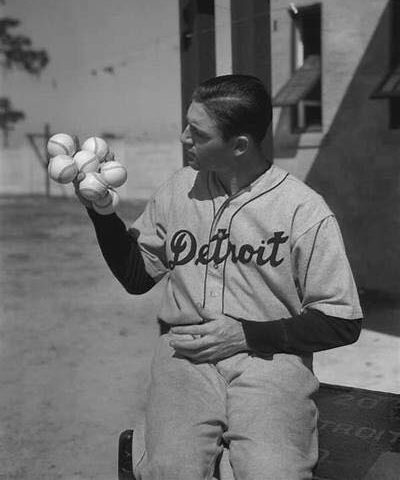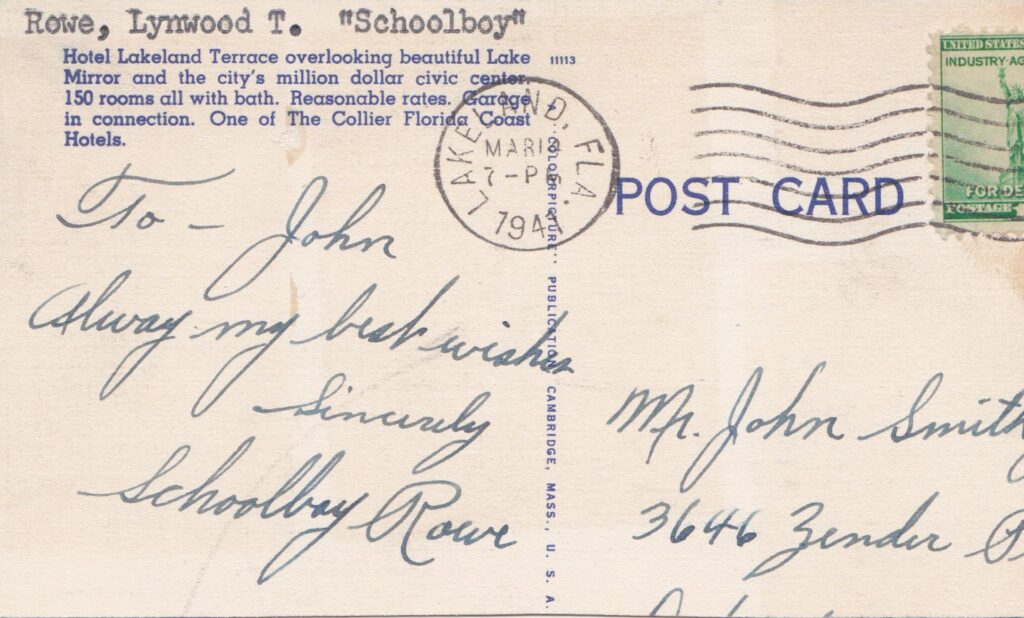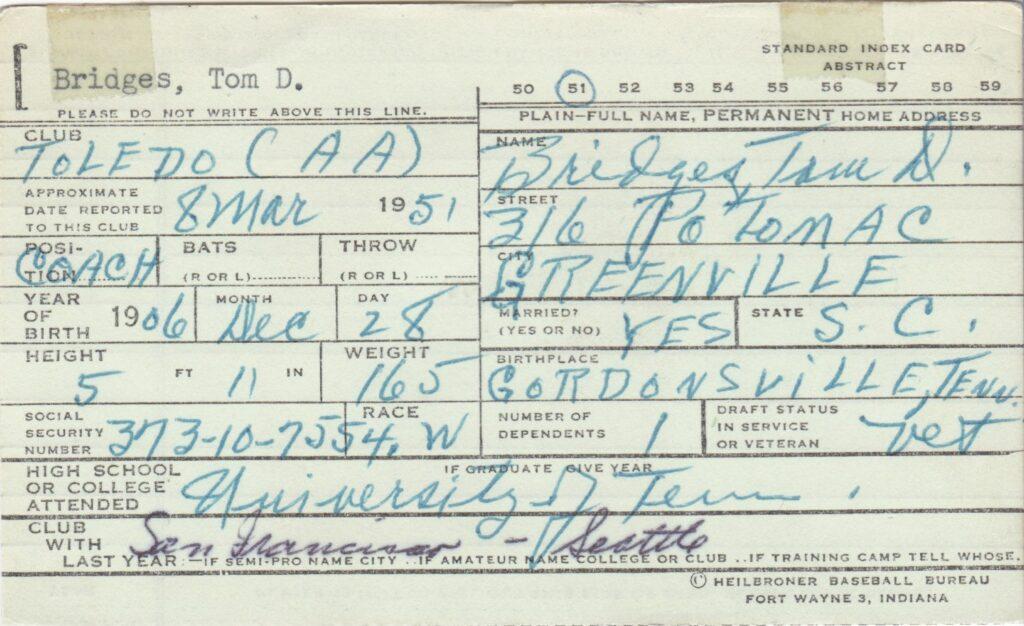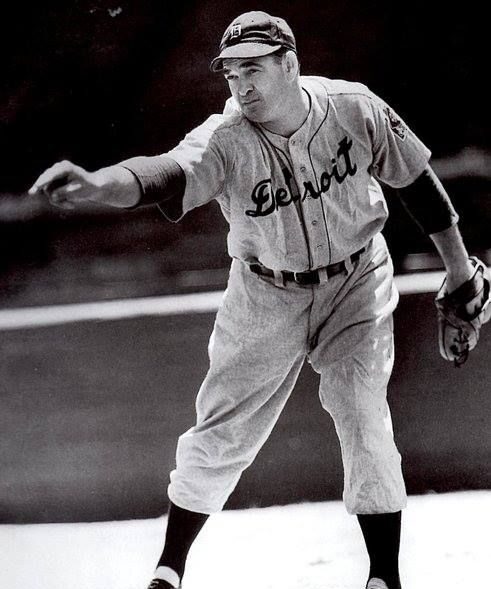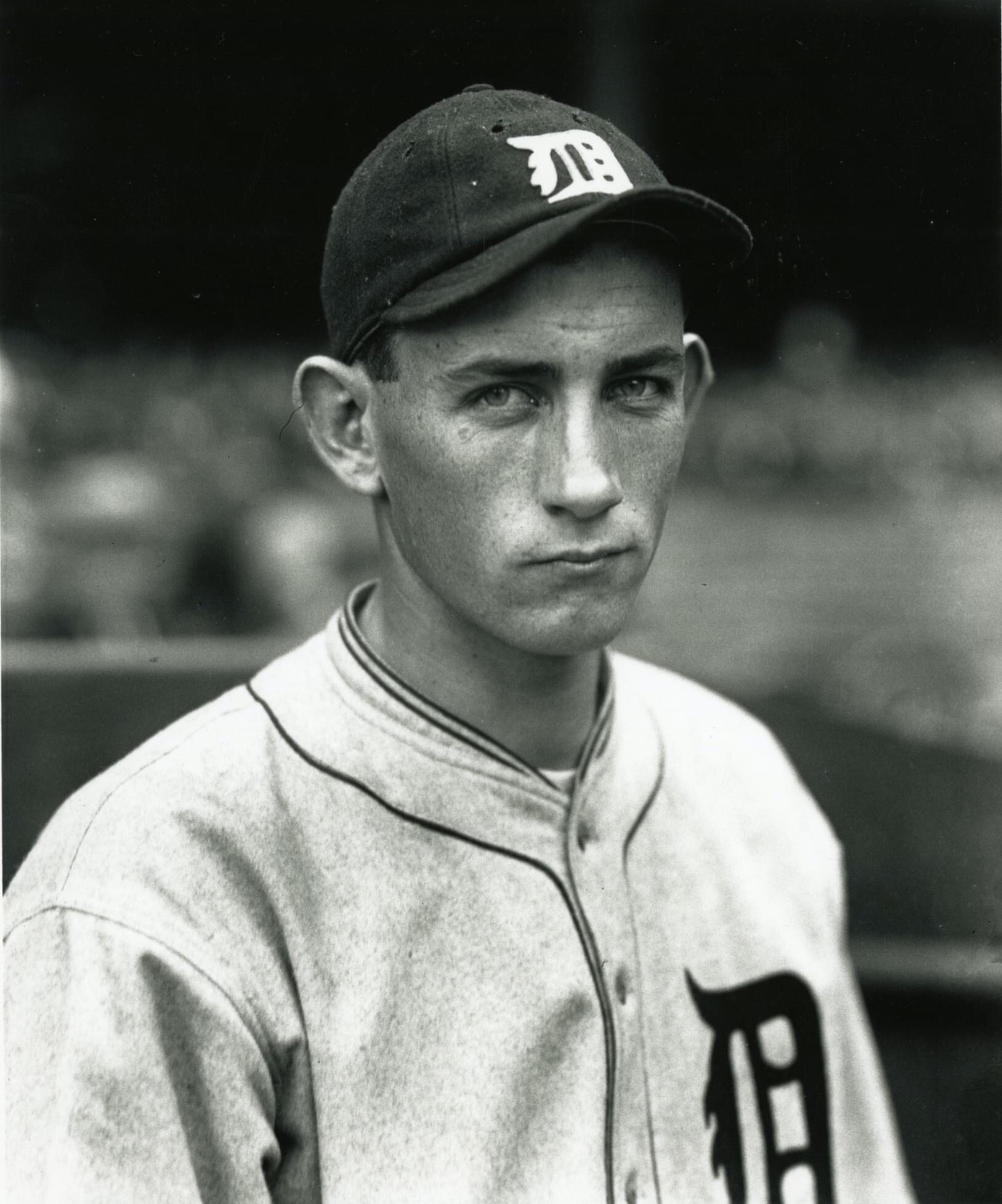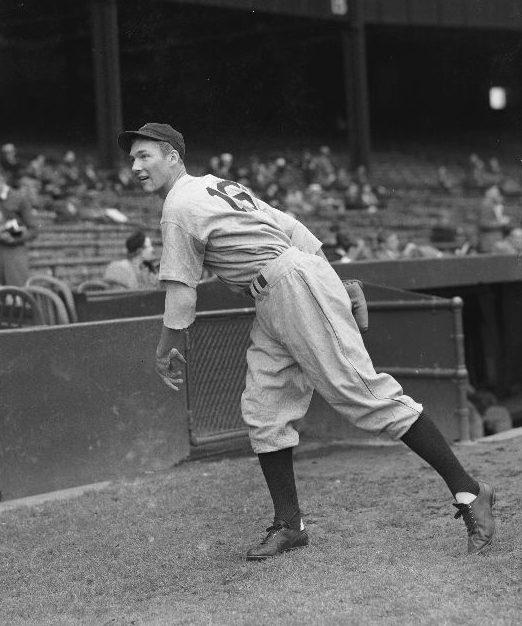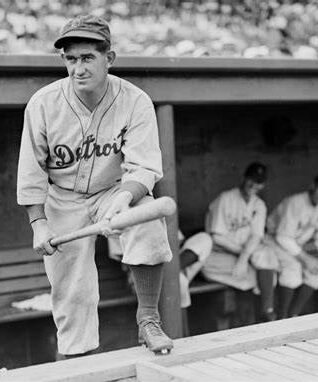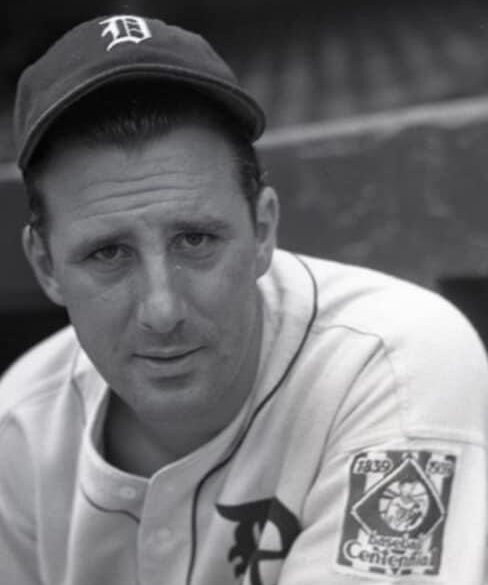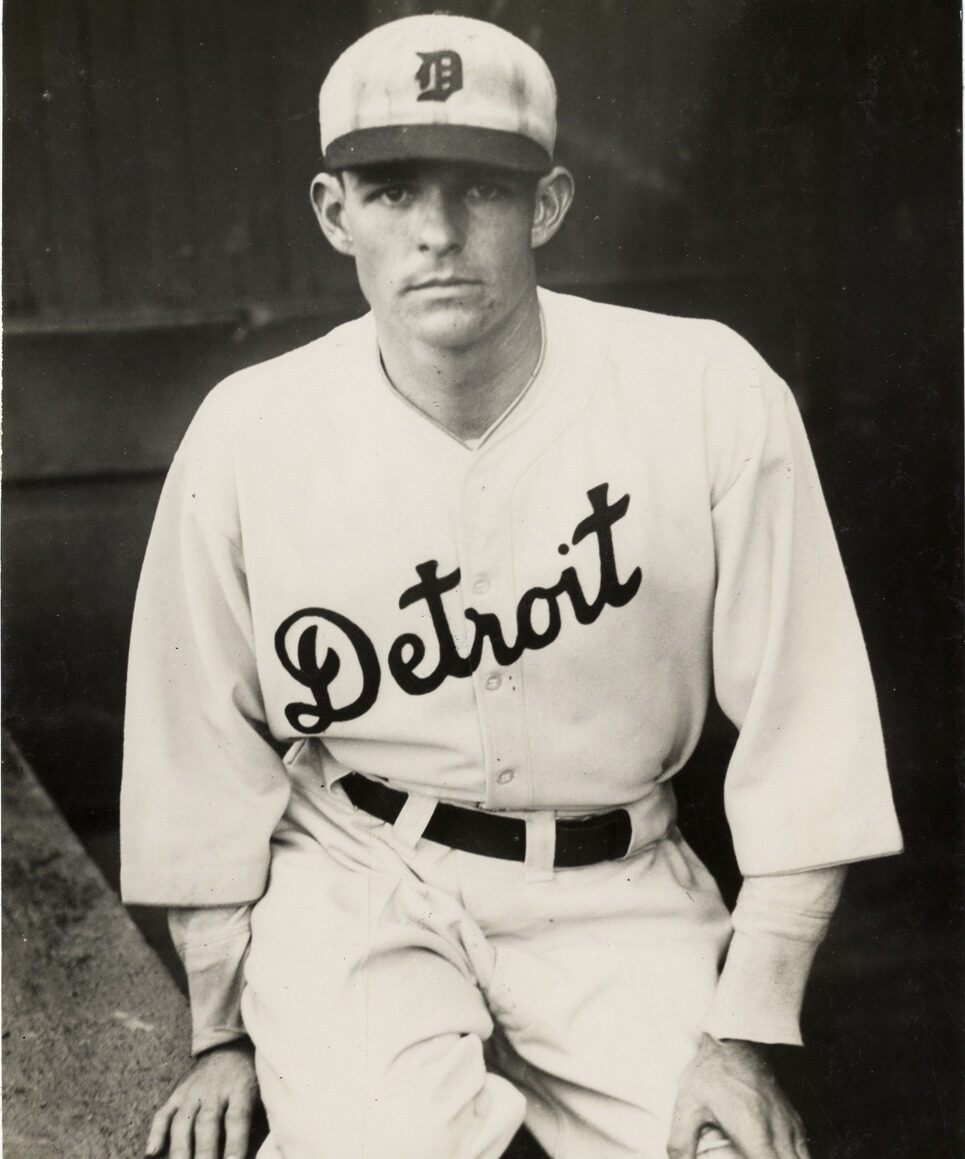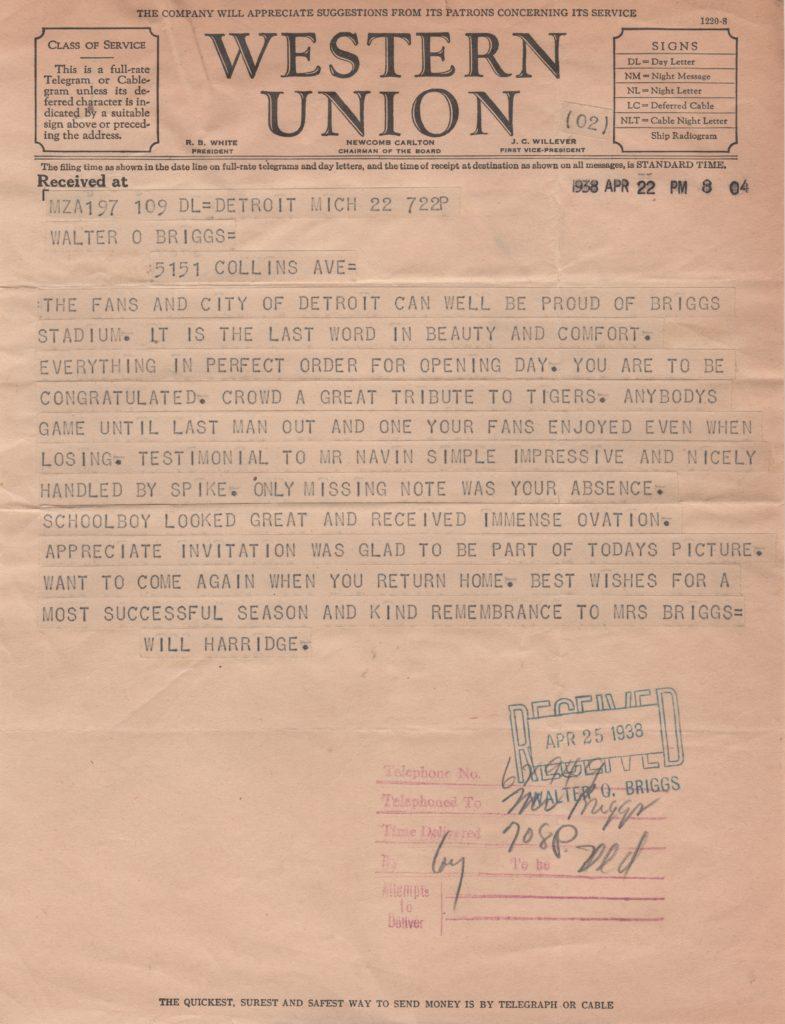
While pitching for a men’s team at just 15-years old, Lynwood Thomas Rowe earned a nickname that stuck – “Schoolboy”. Impressive enough to be signed by the Tigers at age 16 in 1926, Schoolboy Rowe took a circuitous route to the big leagues.
After refusing to report to Detroit’s Class C team in ’27, he was suspended by Organized Baseball. The right-hander instead remained in high school and pitched in local leagues. From 1929-1931 he pitched in a semi-pro circuit.
Finally in 1932, Rowe accepted the Tigers assignment to Beaumont in the Texas League. There he found immediate success, winning 19 games and leading the league in ERA. In 1933 Rowe and his Beaumont teammate, future Hall of Famer Hank Greenberg got called up to Detroit and were in the bigs to stay.
From 1934-1936, Rowe was terrific. In 1934 he won 24 games including a then-AL-record 16 in a row. Detroit tallied 101 victories and breezed to the American League pennant.
In Game 2 of the World Series against the Gas House Gang Cardinals, Rowe allowed just two runs in a 12-inning complete-game victory. Four days later he went the distance again in a loss to Paul Dean. The Cardinals won the Series the next day behind Dizzy Dean’s Game 7 six-hit shutout.
In 1935, Rowe again led Tiger hurlers in WAR by winning 19 games with a league-leading six shutouts. Detroit returned to the Fall Classic, beating the Cubs for the first World Series triumph in franchise history. Rowe was solid, tossing two complete games in his three starts, striking out 14 and walking just 1.
The Tigers slipped to 83 wins in ’36, finishing 19 1/2 games behind the Yankees. Rowe did his part, reaching the All Star Game for the second consecutive season on his way to 19 victories.
Arm troubles limited Rowe to just five starts over the next two seasons. He bounced back to win 10 in 1939. Then in 1940 he rallied to a 16-3 record, leading the Tigers to their third World Series in 7 years. Rowe was uncharacteristically ineffective in October, going 0-2 with a 17.18 ERA.
Schoolboy was a non-factor in 1941 and ’42, pitching to a 4.11 ERA. In Spring of ’43 the Phillies purchased his contract. Rowe enjoyed a renaissance in Philadelphia, going 14-8 with a career-low 2.94 ERA. At bat Rowe hit a team-high .300 and appeared in 56 games as a pinch hitter.
World War II intervened in ’44 and ’45 as Rowe went into the Navy. The hurler played on quite possibly the best service team ever. Saving his arm for his return, Schoolboy played outfield and led the team with a .446 average. Rowe and his mates went 48-2 playing against teams made up of major and minor leaguers, semi-pro and college players.
Back from the war in ’46, Rowe posted double-digit win totals in each of the next three years. The run was highlighted by a 2.12 ERA in ’46 and 14 wins in ’47. When Rowe was selected to the All Star Game in ’47 he became the to represent both the American and National Leagues in the Mid Summer Classic.
His final season came in 1949 when he went 3-7 and retired at season’s end. Schoolboy Rowe’s career statistics include 158 wins, 137 complete games, 22 shutouts, 12 saves, and a .263 lifetime batting average.
In the collection is this telegram from American League president William Harridge to Tigers owner Walter Briggs congratulating him on the opening of newly-renovated Briggs Stadium. In it, Harridge mentions Rowe.
After winning 62 games from 1934-1936 and helping the Tigers to two AL pennants, arm problems plagued Rowe in ’37. Limited to just two starts and eight relief appearances, Rowe went 1-4 with an 8.62 ERA.
The telegram is dated April 22, 1938 the day of Detroit’s home opener in the updated stadium. Tommy Bridges started the game and allowed four runs in as many innings before getting knocked out of the box.
Rowe came on in relief and twirled five scoreless frames, much to the delight of the Detroit faithful. Harridge’s telegram reads in part, “Schoolboy looked great and received immense ovation”.
